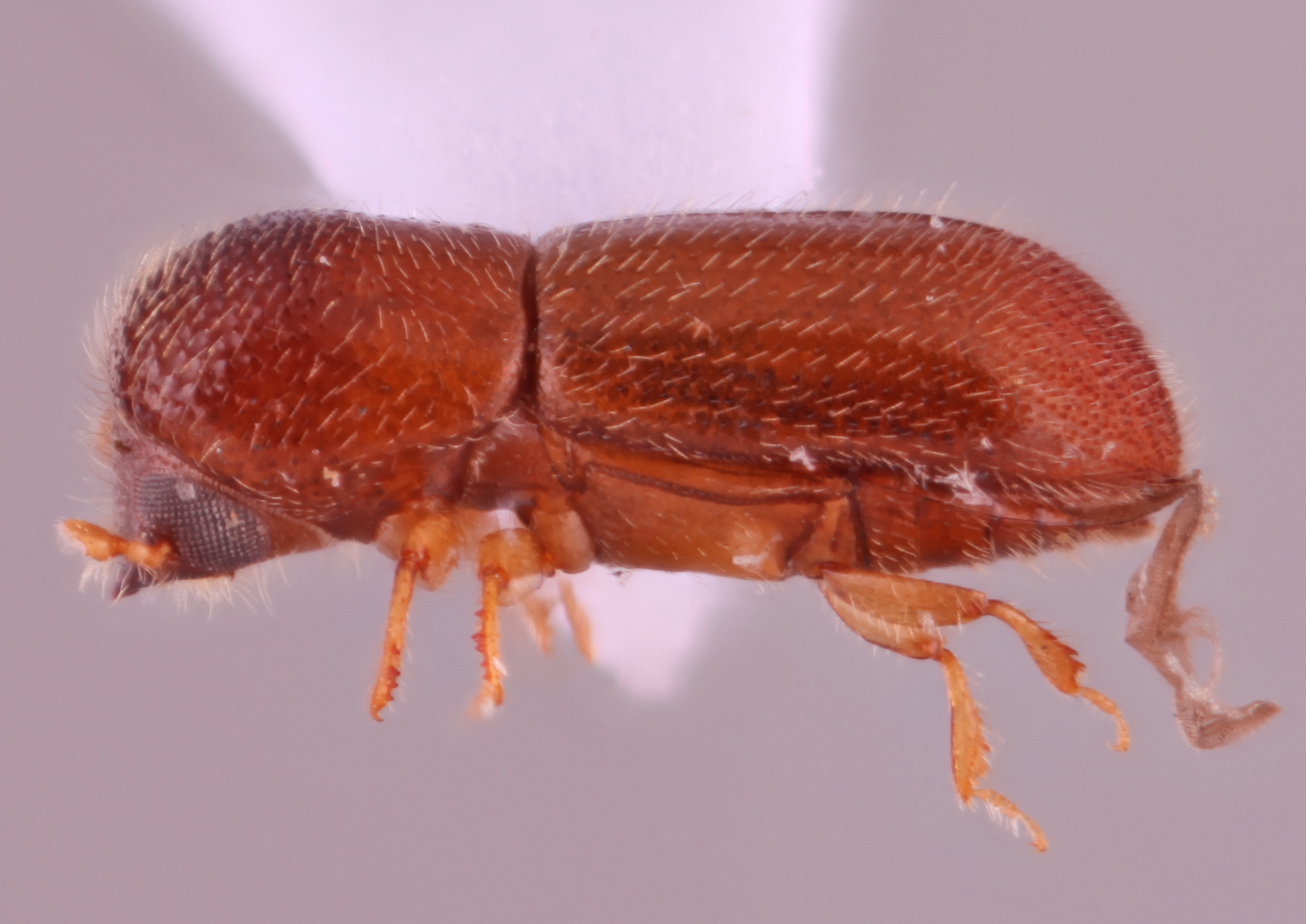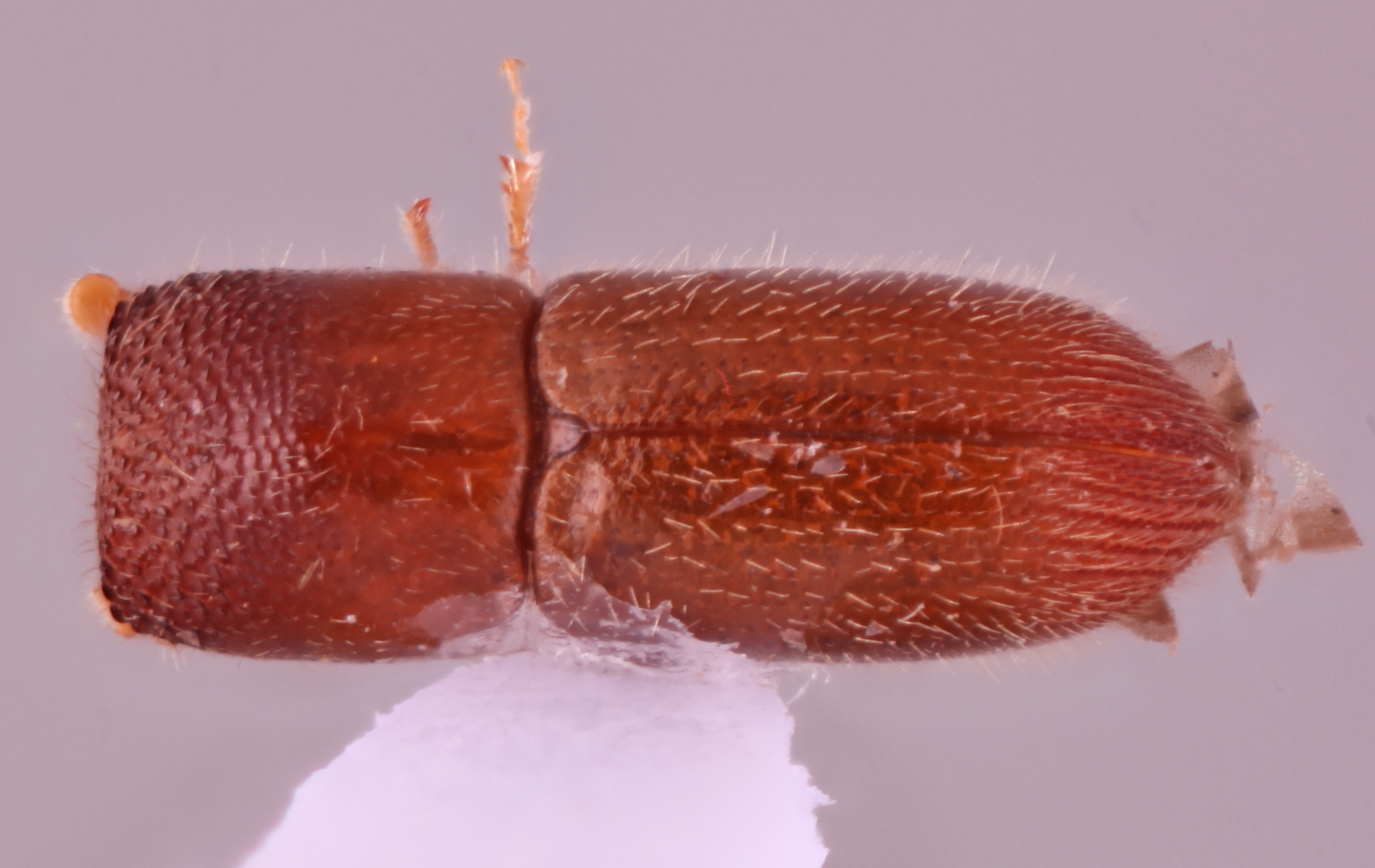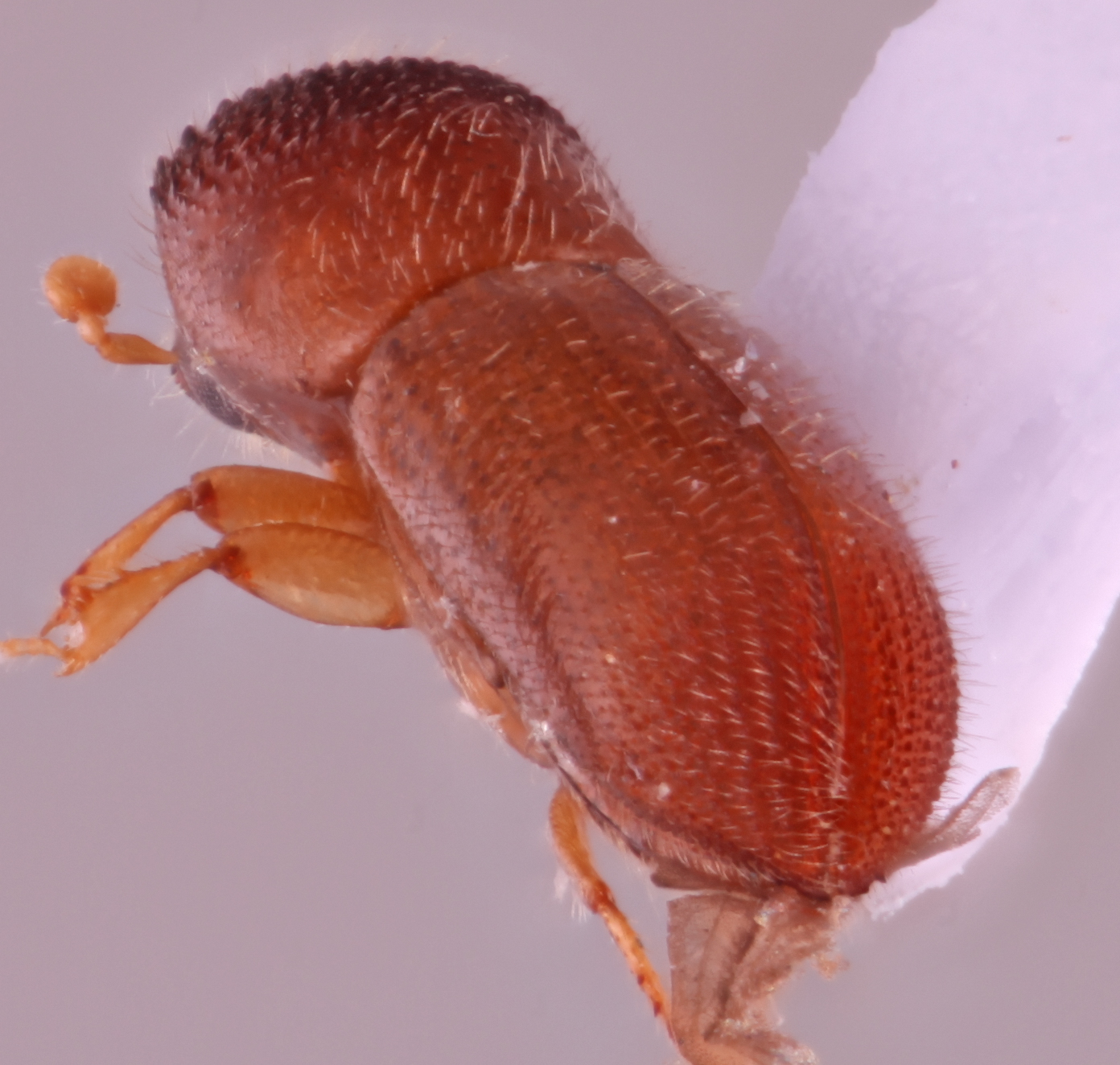Eggersanthus
|
Eggersanthus sublaevis lateral; S.M. Smith |
|
Eggersanthus sublaevis dorsal; S.M. Smith |
|
Eggersanthus sublaevis posterior; S.M. Smith |
Taxonomy
Eggersanthus Sittichaya & Smith 2020: 283.
Diagnosis
2.05–2.2 mm long and 2.73–2.9 times as long as wide (n = 4). Eggersanthus is distinguished by the following combination of characters: pronotumpronotum:
the dorsal surface of the thorax
in dorsaldorsal:
of or relating to the upper surface; opposite of ventral
 view rectangular (type a in Hulcr et al. 2007Hulcr et al. 2007:
view rectangular (type a in Hulcr et al. 2007Hulcr et al. 2007:
Hulcr J, Dole SA, Beaver RA, Cognato AI. 2007. Cladistic review of generic taxonomic characters in Xyleborini (Coleoptera: Curculionidae: Scolytinae). Systematic Entomology 32: 568-584. https://doi.org/10.1111/j.1365-3113.2007.00386.x), anterioranterior:
the front or forward; opposite of posterior margin weakly concaveconcave:
margin weakly concaveconcave:
appearing hollowed out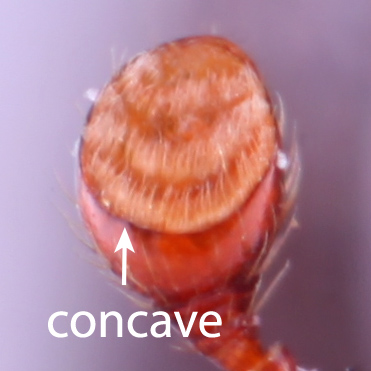 , without a median row of serrationsserration:
, without a median row of serrationsserration:
row of asperities; a saw-like structure  , corners sharply quadratequadrate:
, corners sharply quadratequadrate:
square-like in shape
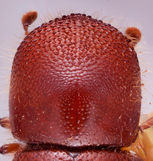 , anterolateral corners asperateasperate:
, anterolateral corners asperateasperate:
covered in asperities with 4–5 serrationsserration:
with 4–5 serrationsserration:
row of asperities; a saw-like structure  forming a 90° angle; pronotumpronotum:
forming a 90° angle; pronotumpronotum:
the dorsal surface of the thorax
in laterallateral:
pertaining to the side
 view with discdisc:
view with discdisc:
the flat central upper surface of any body part (e.g. pronotum and elytra) longer than anterioranterior:
longer than anterioranterior:
the front or forward; opposite of posterior slope (type 7 in Hulcr et al. 2007Hulcr et al. 2007:
slope (type 7 in Hulcr et al. 2007Hulcr et al. 2007:
Hulcr J, Dole SA, Beaver RA, Cognato AI. 2007. Cladistic review of generic taxonomic characters in Xyleborini (Coleoptera: Curculionidae: Scolytinae). Systematic Entomology 32: 568-584. https://doi.org/10.1111/j.1365-3113.2007.00386.x); antennalantennal:
pertaining to the antennae
funicle 4-segmented, clubclub:
the broadened, flattened end of antenna, in Xyleborini comprised of three segments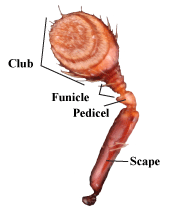 obliquely truncatetruncate:
obliquely truncatetruncate:
appearing cut off or suddenly shortened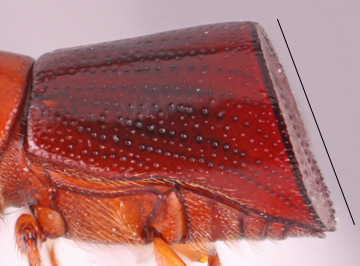 type 2 (Hulcr et al. 2007), approximately circular, as long as wide, segment 1 corneouscorneous:
type 2 (Hulcr et al. 2007), approximately circular, as long as wide, segment 1 corneouscorneous:
horn-like; applied to antennal club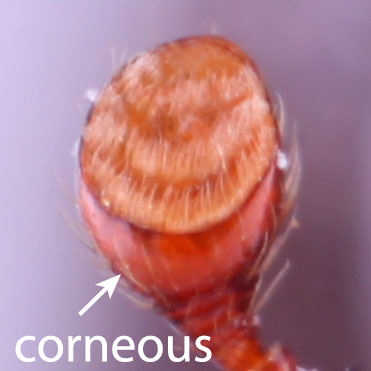 , nearly encircling anterioranterior:
, nearly encircling anterioranterior:
the front or forward; opposite of posterior face, segment 2 pubescent, visible on anterioranterior:
face, segment 2 pubescent, visible on anterioranterior:
the front or forward; opposite of posterior face only; elytralelytral:
face only; elytralelytral:
pertaining to the elytra
declivitydeclivity:
downward slope of either the pronotum or elytra
 with granulategranulate:
with granulategranulate:
pertaining to a coarse, grainy surface texture
 striae and interstriae; protibiaeprotibia:
striae and interstriae; protibiaeprotibia:
tibia of the first pair of legs
very slender, distinctly triangular, posteriorposterior:
toward the rear end; opposite of anterior
 face flat and unarmed; scutellumscutellum:
face flat and unarmed; scutellumscutellum:
a shield-like sclerotized plate located at the midpoint of the elytral base
large, triangular, clearly visible from dorsaldorsal:
of or relating to the upper surface; opposite of ventral
 view; elytra attenuateattenuate:
view; elytra attenuateattenuate:
gradually tapering apically
 ; and no mycangial tufts present.
; and no mycangial tufts present.
May be confused with
Arixyleborus and Webbia
Distribution
A rare genus with one poorly known species that has been found in Thailand and the Philippines.
Gallery system
unknown

